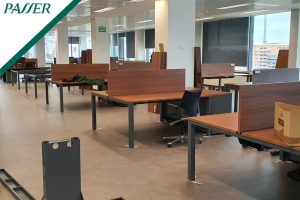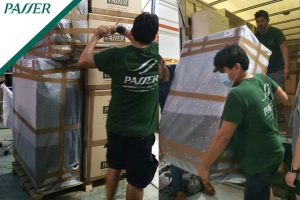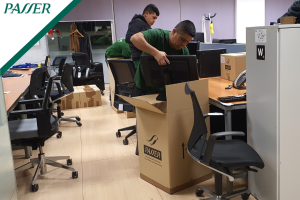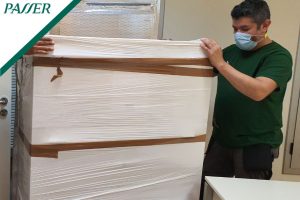Effective check list for a well-organized office move
An office move is a task that requires organization, planning, and a well-defined strategy to ensure everything runs smoothly. It's not just about moving boxes from one location to another; it also involves transporting documentation, furniture, computer equipment, and valuables that are essential to the daily operations of the company. Good planning will make the difference between a chaotic process and one that runs smoothly and without incident.
Before starting, it's essential to prepare a clear and detailed checklist to guide you throughout the entire process. This list will not only prevent oversights, but will also help you know exactly where each item should go in the new location. Furthermore, if your company is looking for a new location, it's important to consider everything this change entails to minimize the impact on daily operations.
Create a clear and functional document
The first step to a successful office relocation is to have a simple, well-structured document. It can be a standard or customized format, but it should include everything necessary: an inventory of items to be moved, classification by furniture type, legends, observations, and any details relevant to the organization.
Digitize the information
Although a physical list is useful for keeping track of the move, having a digital version makes it easier to access, edit, and update data. A shared spreadsheet may be the best option for multiple people to participate in the management process, avoiding information loss and streamlining decision-making.
Define the contents of each box
When moving offices, it's common to find boxes containing employees' personal belongings, others containing documents, and others containing commonly used materials. Organizing this content according to its usefulness and the intended location is key so that, once in the new location, everything can be quickly put back in its proper place.
Label and locate
Labeling the boxes is just as important as deciding what will go in each one. An identifying label with a number or name linked to the inventory will allow you to see at a glance the contents and their location in the new office. Accompanying this process with a floor plan will make it easier for the moving team to place each box and piece of furniture in the correct location.
Identify special objects
There are always items that require special handling, whether due to their value or fragility. These items must be identified before shipping so they can be properly packaged and ensure they arrive in perfect condition.
Prioritize the essentials
In an office with a large amount of items, unpacking can take several days. That's why it's essential to identify and label the boxes containing the most urgent and necessary items for daily work, so they're available immediately.
Include furniture in the checklist
You don't just have to think about office supplies or documentation. A well-organized office move also includes an inventory of the furniture that will go in each room, whether it's desks, chairs, meeting tables, or storage units.
Use the list during the move
During the move, the list serves as a control tool to verify that everything leaves the original location and arrives at the correct destination. At Passer Moving, for example, we conduct several checks by room and floor together with the client to ensure nothing is missing.
Rely on professionals
Hiring a company specializing in office relocation can save you time, effort, and potential errors. Professionals not only handle transportation, but also planning, packing, disassembling and assembling furniture, disconnecting and connecting equipment, and managing permits and access.
A headquarters move doesn't have to be a complicated experience if it's properly planned. At Passer Moving, we provide you with the experience, resources, and human resources necessary to ensure your office relocation is quick, safe, and perfectly organized. If you'd like more information, contact us, and we'll help you every step of the way.








